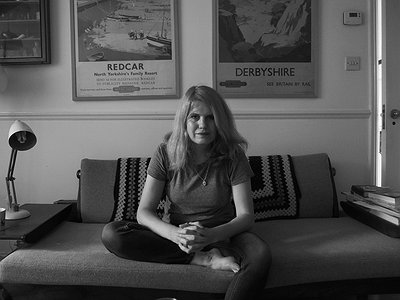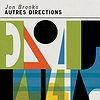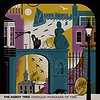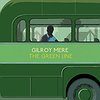Name: Frances Castle
Occupation: Designer, illustrator, founder of Clay Pipe Music
Nationality: British
Current Release: Jon Books Autres Directions
Musical Recommendations: Over the last few weeks I've been listening to Ed Dowie’s 'The Uncle Sold' and Mother Earth’s 'Plantasia' by Mort Garson.
Website: If you enjoyed this interview with Frances Castle, be sure to visit www.claypipemusic.co.uk for more information.
When did you start creating designs and layouts for music - and what or who were your early passions and influences? What is it about the relationship between music and design that drew you to it?
I first started Clay Pipe in 2011. I am a freelance illustrator and generally work on a variety of different projects from interactive stuff to children's book illustration. The original idea – apart from putting out music that I love - was to give myself exciting projects that I could use as part of my portfolio. I started releasing music on CD, and initially hand printed all the covers. I was looking at a lot of early 20th Century British artists and printmakers at the time, (Ravillious, John Minton, Piper etc) and the images seemed to sit well and reflect the music I was listening to – mainly folk and experimental electronics. So, I think initially this was my inspiration though it has probably moved on a bit now.
For most artists, originality is first preceded by a phase of learning and, often, emulating others. How would you describe your own development as an artist and the transition towards your own voice? What is the relationship between copying, learning and your own creativity?
Well I've been at it for a long time, I studied illustration at college and then spent 10 years working in the games industry – where you don't have much of a voice, if any. I used to do a lot of painting in my spare time then, but towards the end of my time working in games, for various reasons, I came back to the idea of illustration and stepped away from painting and became more interested in print media. Finding your own voice as illustrator is as important as finding your voice as a musician. You can be influenced by others, but it only becomes your own work when you inject your personality and passions into it.
What were your main design challenges in the beginning and how have they changed over time?
Initially everything I did for Clay Pipe was hand printed, which threw up its own set of limitations as it meant that I could only do around 150 CDs each release. Eventually because of demand, the label out-grew this, and the call for vinyl was too great to ignore. It was a good starting place though.
What makes for a great music-related design? What are the differences in terms of approach for different formats like posters, flyers and covers?
Apart from the sizing, I don't think there is a huge amount of difference in designing for flyers and posters over sleeve art – your aim is basically the same; to somehow visually interpret the music or event and make your design striking and intriguing enough to draw the listener in. I guess a poster or flyer might have more text which throws up its own layout considerations but other than that I would approach the initial design in a similar way.
What kind of relationship is there between the cover of a release and the music? What can the visual layer add or change about the music? Would you say the end result is an art work in its own right, a fusion or merely a support of the music?
Design and popular music have always walked hand in hand. Looking back over favourite records, sometimes the sleeve design can be as evocative as the music; they seem to be inseparable. Most of the music I put out is instrumental, so I like to try and place the listener visually somewhere before they start to listen. I do sell some of my sleeve designs as prints, so I guess they have to stand up as art in their own right. The visual appearance of a record has a big effect on the way a listener hears the music. Presenting the music with care, helps in a world where the listener has thousands of choices at the click of a button.
How do you make use of technology? In terms of the feedback mechanism between technology and creativity, what do humans excel at, what do machines excel at?
I make use of technology as much as I can. Social media is very important as it gives me direct contact with the people who buy the records – but I'd imagine that is the same for most labels. I come from a pure illustration back ground, but I have been using computers for a long time. Computers can't draw and they have no sense of colour, but they are really good at moving things around on the page and helping you fill in-between the lines quickly.
Collaborations can take on many forms. What role do they play in your approach and what are your preferred ways of engaging with the artists you're working for?
Each album is different. Some artists are happy just to let me get on with the cover and others come to me with distinct ideas. It’s always a collaboration though, as the music is the starting point.
Could you take us through a day in your life, from a possible morning routine through to your work? Do you have a fixed schedule? How do music and other aspects of your life feed back into each other - do you separate them or instead try to make them blend seamlessly?
I work from home so I'd say that my work and life are very much entangled and this suits me. I start my day by taking some exercise either swimming or a cycle ride, after that I spend the rest of the day working. What I work on depends on how busy I am with commissions, as these usually have a deadline and take precedence. I often work into the evening on label stuff for Clay Pipe or my own music. I usually work Monday to Friday and try and take weekends off, although that doesn't always happen.





